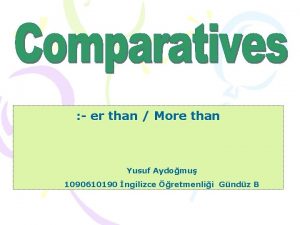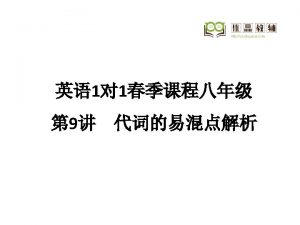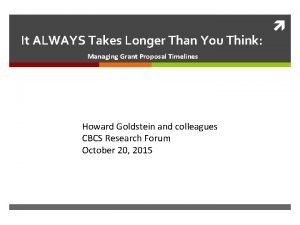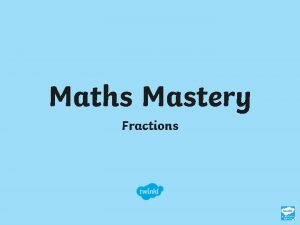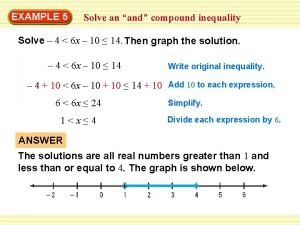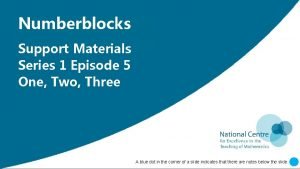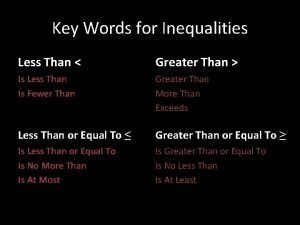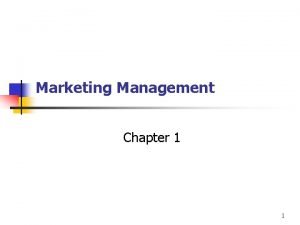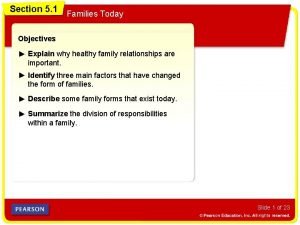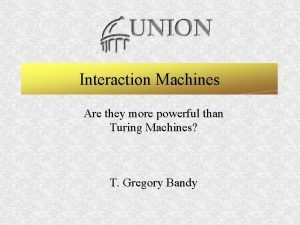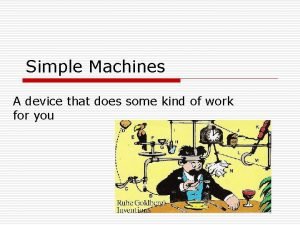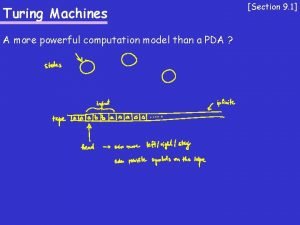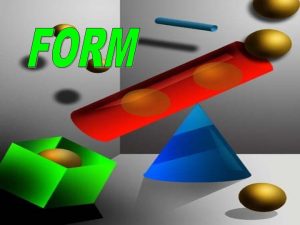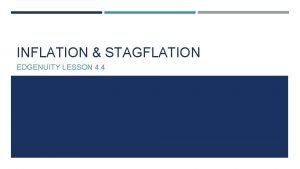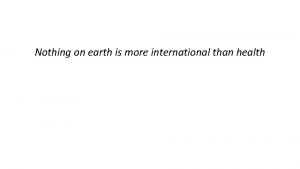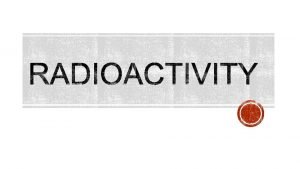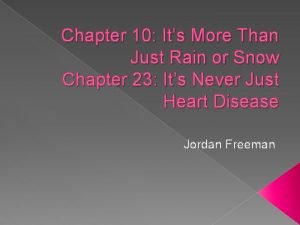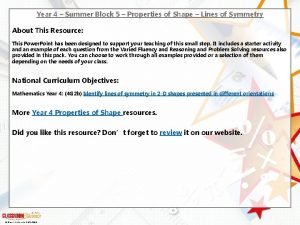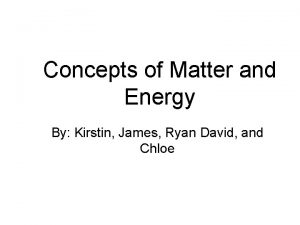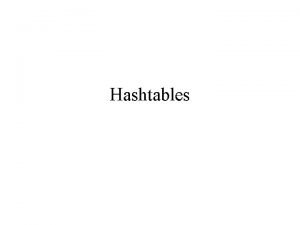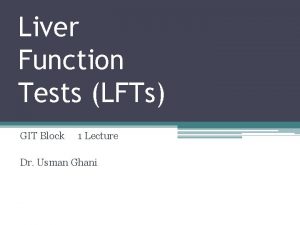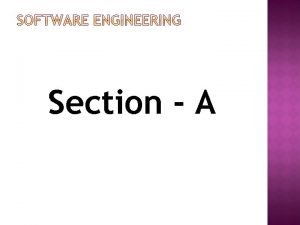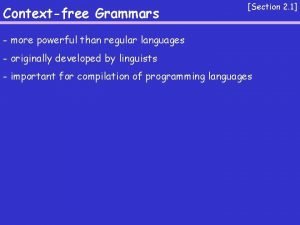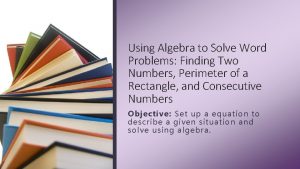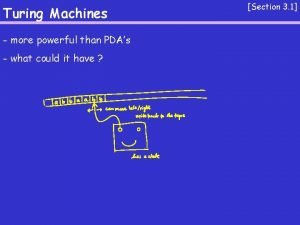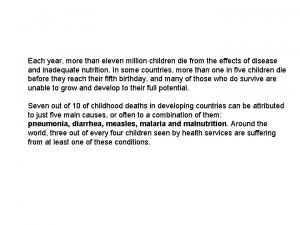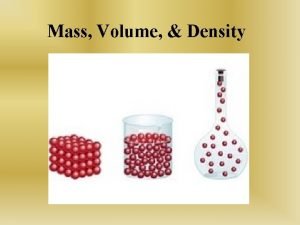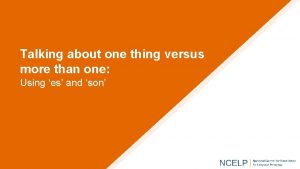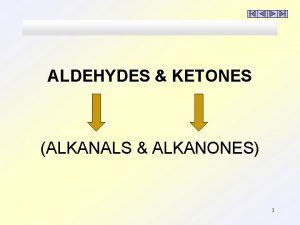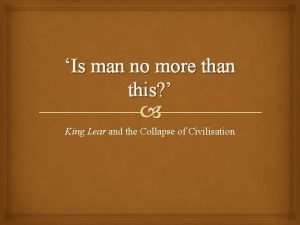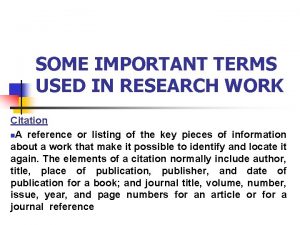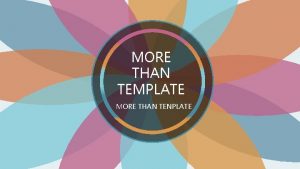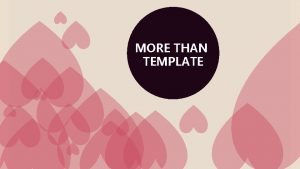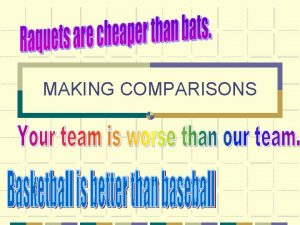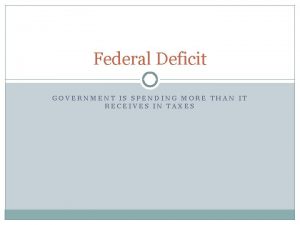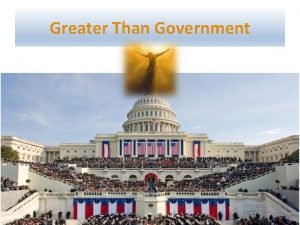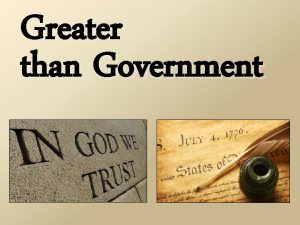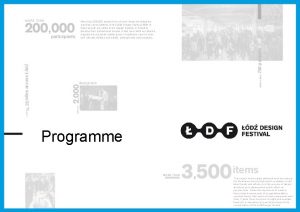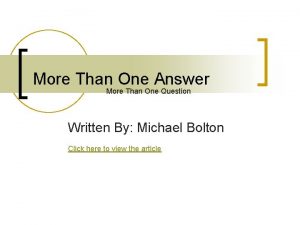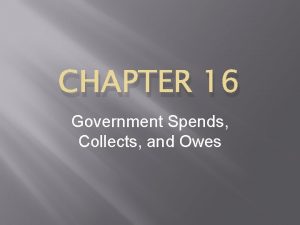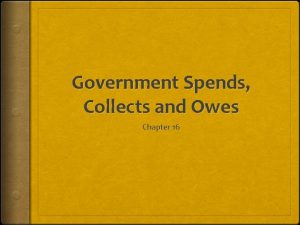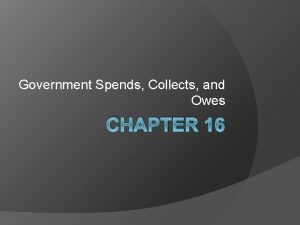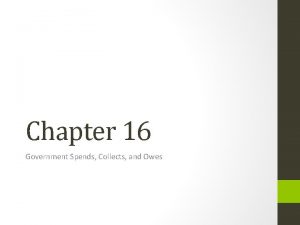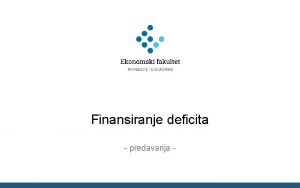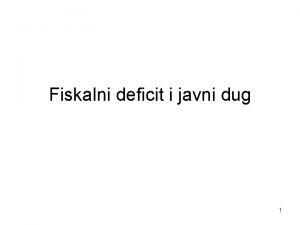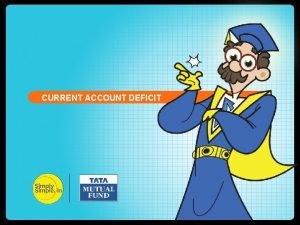Deficit When government spends more than it takes
































































- Slides: 64


• Deficit: When government spends more than it takes in from taxes • National Debt: all the deficits we have had since George Washington was president

• The federal government never has to declare bankruptcy because when it needs more money, it borrows it by selling bonds – Government must pay the interest on the bonds – In a typical year interest payments are thirdbiggest item in the national budget after money spent on redistribution and defense

• GDP: Gross Domestic Product – The total of all the goods and services produced in a country during a certain year

• How our country can make progress toward reducing our total National Debt 1. Raise Taxes – Democrats/Liberals 2. Cut Spending – Republicans/Conserva tives


• Economic conditions are strongly associated with how much success the incumbent party has in keeping control of the Presidency and Congress • Example: President Bill Clinton’s Slogan Against George Bush, Sr. – “It’s the Economy Stupid” – Bush Lost Because Economy was Bad

• People are not just worried about their own pocketbooks but are worried unemployment of the Nation as a whole • People look at the unemployment of the Nation when casting votes

• What politicians try to do…. – They would love to produce low unemployment rates and rising family incomes just before an election • Democrats want to reduce unemployment • Republicans want to reduce inflation


• Politicians confront TWO inconsistent kinds of majoritarian politics 1. Everyone wants general prosperity 2. Large majorities want more government spending on popular programs – Social Security

• TAXING POLICY THAT IS POPULAR – Raise taxes on cigarettes (sin tax) – Raise taxes on the wealthy

• Increase in spending is more popular than Cutting Taxes


• Since most tax issues are majoritarian issues they involve the president – Think of how the people of the United States are depending on President Obama to get us out of the Recession

• There are FOUR major theories about how to best manage the Economy 1. Monetarism 2. Keynesianism 3. Economic Planning 4. Supply-side Tax Cuts

• Most tax issue are Majoritarian (All of Us) issues, they usually involve the president – Example: All of us in America are very concerned with the state of the Economy and we look to our president to help solve the problem

Four Economic Theories 1. Monetarism: Milton Friedman – Believe that inflation occurs when there is too much money chasing too few goods • Federal Government is allowed to print money; according to Monetarists, inflation occurs when we print too much money

• Monetarism (con’t) – When inflation is rampant and the government tries to do something about it, it often cuts back sharply on the amount of money in circulation – raise interest rates on your credit cards

• Monetarism (con’t) – Monetarists believe that the proper thing for a government to do is to have a steady, predictable increase in money supply at a rate that is about equal to the growth in the economy’s productivity; beyond that the government should leave matters alone and let the free market operate

2. Keynesianism: John Maynard Keynes – The key is to create the right level of demand; this is the task of the government – When demand is too little, the government should pump money into the economy (by spending more than it takes in taxes and by creating public-works programs)

2. Keynesianism (con’t) – When demand is too great the government should take money out of the economy by increasing taxes or cutting federal expenditures – this is an Activist Government – Government is involved

PRESIDENT OBAMA IS USING THE KEYNESIAN MODEL TO HELP OUR ECONOMY

3. Economic Planning: John Kenneth Galbraith – Price and Wage Controls • Big corporations can raise prices because the forces of competition are too weak to constrain them, and labor unions can force up wages because management finds it easy to pass the increase to consumers in the form of higher prices

3. Economic Planning (Con’t) – Thus during inflationary times (money value is weak) government should regulate the maximum prices that can be charged and wages that can be paid

3. Economic Planning (Con’t) – Government should somehow direct or plan investments so the industries would recover new and better industries to take their place • Government directs industrial investments

• PRESIDENT OBAMA IS ALSO EMPLOYING ECONOMIC PLANNING TO HELP OUR ECONOMY

4. Supply-Side Tax Cuts: Arthur B. Laffer – More planning but LESS GOVERNMENT INTERVENTION – Conservative Republicans prefer this – Sharply cutting taxes will increase people’s incentive to work, save, and invest • Greater investments lead to more jobs

• Economic Ideology and Theory – Conservatives = Monetarism or Supply-Side Tax Cuts (want less government in economy) – Liberals = Keynesian because it allows government to carry a wide range of social welfare programs – Obama lower cost of health care insurance for those on unemployment – Socialists = Economic Planning

• What is Reaganomics? – Economic Policy used by President Ronald Reagan • It is a combination of Monetarism and Supply-Side Tax Cuts & budget cutting • Reagan wanted to reduce the size of the federal government, stimulate economic growth, and increase spending on the military

• What is Reaganomics? – Decrease personal income tax but Reagan increased the Social Security Tax • This created a massive budget deficit


• Machinery about making decisions about economic matters is complex and not under the President’s fullcontrol – Troika (THE THREE) • Chairman of the Council of Economic Advisors (CEA) • The Director of Economic Advisors • Secretary of the Treasury

• THE PRESIDENT SUBMITTS AN ECONOMIC REPORT TO CONGRESS EACH YEAR

• The “Fed” (The Federal Reserve System) – Created in 1913 – Chairman of “Fed” is Ben Bernanke – 7 members are appointed by the president with consent of the Senate, for fourteen year non-renewable terms and may not be removed except for cause

• The “Fed” (Con’t) – Chairman of the Fed serves a four year term – The “Fed” is independent of the President and Congress – Most important function of the “Fed” is to regulate, insofar as it can, the supply and price of money

• The “Fed” (Con’t) – The Federal Reserves sets Monetary Policy: effort to shape the economy by controlling the supply of money and interest rates. – BOX on page 500

• Congress – Most important part of making economic policy – Congress must approve all taxes and most money spent by the Government – There can be NO wage or price controls unless Congress says it is “OK”

• Congress (Con’t) – Congress has the ability to alter the policy of the nominally independent Federal Reserve Board “The Fed” by threatening to pass laws that would reduce the “Feds” power

• Congress (Con’t) – Congress has the power of Fiscal Policy: managing the economy by the use of tax and spending laws – When Congress passes laws governing Foreign Trade, it is responding to interest group politics

• Congress (Con’t) – Industries that find it easy to sell American products abroad – Want Free Trade – Industries that find it hard to compete with foreign imports (goods coming into the country) OPPOSE Free Trade – Free Trade means NO taxes or restrictions on International Trade

• NAFTA – North American Free Trade Agreement – is FREE TRADE between the United States, Canada, and Mexico • Republicans usually support Free Trade


• Who decides how to spend the government’s (our) money? – Congress and President – AND/OR – Voters and Interest Groups

• What the “people” want from political candidates – “Vote for me and I will keep government spending down and cut the deficit” – “Vote for me and I will make certain that your favorite program gets more money”


• Budget: is a document that announces how much the government will collect in taxes and spend in revenues and how those expenditures will be distributed among different programs the government establishes

• Fiscal Year: each budget covers a fiscal year – Fiscal year runs from October 1 to September 30 of the next year • A fiscal year is named after the year in which it ends (thus “fiscal 2006” or “FY 2006 means the year ending on September 30, 2006

• The federal budget is a list of everything the government is going to spend money on, with only slight regard for how much money is available to be spent

• Congressional Budget Act of 1974 – Now after the president submits his budget in February, two budget committees – one in the House and one in the Senate – study the president’s overall package and obtain an analysis of it from the Congressional Budget Office (CBO)

• Congressional Budget Office – Each committee then submits a budget resolution: a congressional decision that states the maximum amount of money the government should spend and where it should be spent

• In the month of May Congress is to adopt, with some modifications, the budget resolutions, intending them to be targets to guide the work on each legislative committee as it decides what should be spent in it’s area – Discipline is imposed of various committees when it comes to spending – After each committee approves its appropriations bills and Congress passes it, it then goes to the president for his signature

• Entitlements: government funds cannot be changed. About two-thirds of what the government spends is mandatory: money goes to people who are entitled to it – Examples of entitlements: • Social security, veterans’ benefits, food stamps, and money owed to investors who have Treasury Bonds

• The government can only change about one-third of federal spending in any year

• But, if you require Congress to vote first on a budget ceiling (the most the Gov can spend) then total spending will go down • If there is NO budget ceiling adopted by Congress, the money problems would be left to the appropriations committee


• Tax policy reflects a mixture of majoritarian politics (us) – “What is a ‘Fair’ tax law? ”

• Tax policy also reflects client politics – interest groups – “How much is in it for me? ”

• In the United States a Fair Tax law has generally been viewed as one that keeps the overall tax burden low, requires everyone to pay something, and requires the better-off to pay at a higher rate than the less-well-off

• Income tax burden is lower in the United States than in most other democratic nations • Most nations use sales tax more than income tax because people cannot evade a sales tax

• THE RISE OF THE INCOME TAX (507 -509) – In 1913, Congress proposed and the States ratified the 16 th Amendment which authorized the Income Tax • For the next forty years, tax rates tended to be higher during wartime and lower during peacetime

• THE RISE OF THE INCOME TAX (507 -509) – Progressive Tax: wealthy pay a higher tax than the poor – Loopholes: since the rich pay more in taxes we have loopholes – which means deductions, exemptions, and exclusions by which people could shelter some of their income from taxation (write-off) – deduct interest paid on your mortgage • Republicans (rich) = loopholes • Democrats (poor) = low tax rate

• The Rise of the Income Tax – Tax Reform Act of 1986: • Instead of high tax rates with big deductions, we got lower tax rates with smaller deductions • People (me & you) benefit from this Act • Businesses big losers with implementation of this Act

 Lirik lagu more more more we praise you
Lirik lagu more more more we praise you More more more i want more more more more we praise you
More more more i want more more more more we praise you More er than
More er than 5730x5
5730x5 Better than god
Better than god It always takes longer than you think
It always takes longer than you think Trevor spends 45 minutes
Trevor spends 45 minutes One who spends very little money
One who spends very little money What are the three levels of government
What are the three levels of government Which fraction is the odd one out
Which fraction is the odd one out Percents less than 1
Percents less than 1 Your love is deeper than the ocean higher than the heavens
Your love is deeper than the ocean higher than the heavens Greater than less than fractions
Greater than less than fractions Greater than less than examples
Greater than less than examples Numberblock 1 and 2
Numberblock 1 and 2 Inequality key words
Inequality key words Marketing more than any other business function deals with
Marketing more than any other business function deals with E e cummings love is more thicker than forget
E e cummings love is more thicker than forget 5-1 changing households
5-1 changing households What are jovian planets made of
What are jovian planets made of Why do some earthquakes cause more damage than others
Why do some earthquakes cause more damage than others Turing machine is more powerful than: *
Turing machine is more powerful than: * Device made up of more than one simple machine
Device made up of more than one simple machine Definition of curriculum evaluation
Definition of curriculum evaluation Gender equality is more than a goal in itself
Gender equality is more than a goal in itself Society is more than the sum of its parts
Society is more than the sum of its parts 4 more than p
4 more than p Turing machine is more powerful than
Turing machine is more powerful than Why are related forms more agreeable than unrelated forms?
Why are related forms more agreeable than unrelated forms? Ypically, high inflation is a sign of
Ypically, high inflation is a sign of Millionaire game rules
Millionaire game rules Who functions
Who functions Element name
Element name Can an atom have more neutrons than protons
Can an atom have more neutrons than protons It's more than just rain or snow
It's more than just rain or snow Now cook more than intelbased models
Now cook more than intelbased models How to not plagiarize
How to not plagiarize Powerpoint animation delay more than 60 seconds
Powerpoint animation delay more than 60 seconds Your glory god is what our hearts long for
Your glory god is what our hearts long for Wiseflow
Wiseflow How many shapes have more than one line of symmetry
How many shapes have more than one line of symmetry Can an atom have more neutrons than protons
Can an atom have more neutrons than protons De ritis ratio
De ritis ratio Hash table abstract data type
Hash table abstract data type Git lft
Git lft Water contracts (gets smaller) when it freezes
Water contracts (gets smaller) when it freezes A dollar today is worth more than a dollar tomorrow
A dollar today is worth more than a dollar tomorrow Software is more than just a
Software is more than just a Cfgs are more powerful than
Cfgs are more powerful than Using algebra to solve word problems
Using algebra to solve word problems Physical fitness is the ability to
Physical fitness is the ability to Pda is more powerful than
Pda is more powerful than 1750s music
1750s music Nobody in the world sells more real estate than remax
Nobody in the world sells more real estate than remax Math is more than just numbers
Math is more than just numbers The jaguar by ted hughes analysis
The jaguar by ted hughes analysis Time sharing paradigm
Time sharing paradigm Sporogony
Sporogony A researcher claims that 62 of voters favor gun control
A researcher claims that 62 of voters favor gun control Mass volume density video
Mass volume density video More than one thing
More than one thing Nothing is more precious than health
Nothing is more precious than health Ketone iupac name
Ketone iupac name Is man no more than this
Is man no more than this Technical terms used in research
Technical terms used in research


